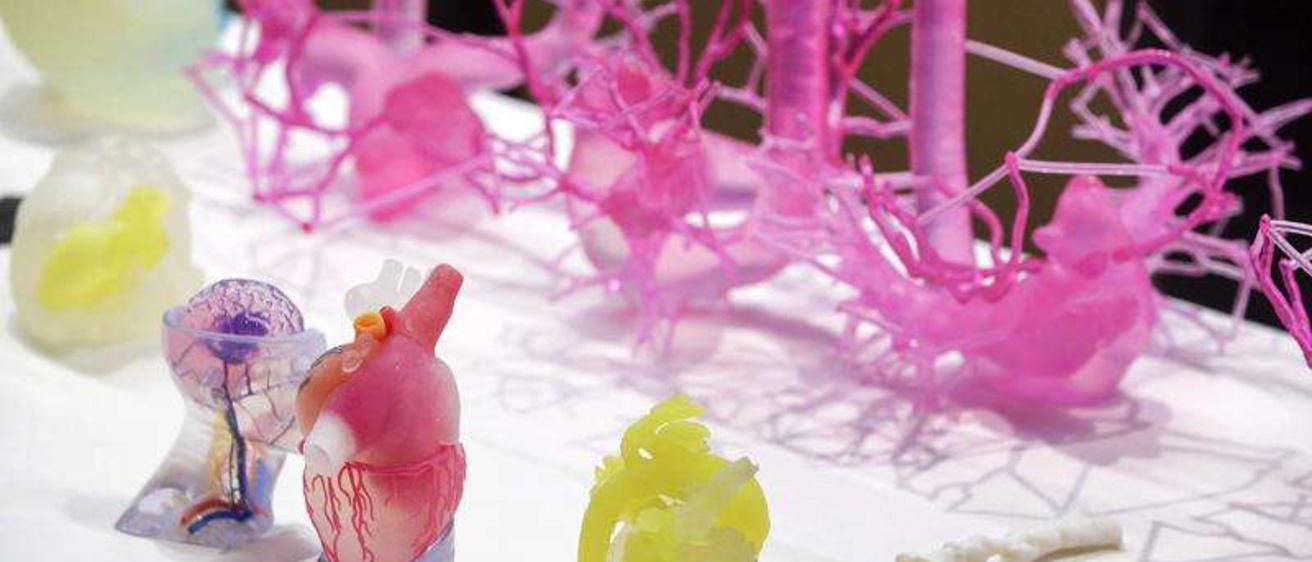Advancements in medical technology soon could help Iowa surgeons visualize exactly what is wrong with a patient’s organ — before they make their first incision.
About 66 people, many with health care backgrounds, passed around synthetic hearts and vertebrae Thursday morning and afternoon at the University of Iowa Hospitals and Clinics, as they listened to presentations on the 3D printing technology that produced them, and its future applicability.
Similar facsimile organs, generated in the university’s Protostudios biomedical prototyping hub, have come in handy before several procedures at the university’s children’s hospital over the past six months.
Charles Romans, the school’s prototyping director, said surgeons will reach out to Protostudios for 3D organ models of patients, generated from CT scans, using them to review irregularities and make more informed decisions on how to proceed with operations.
Kicked off in 2016 with a $1.5 million grant from the Iowa Economic Development Authority, Protostudios is significant in the area in that its 3D printer — a $400,000 Stratasys J750 PolyJet model — can mix and match different materials, Romans said.
The result, he said, can be models with varying realistic textures — for example, a musculoskeletal printed hand with firm material for the bones and more gelatinous substances for the tissue and veins.
Dr. Ravi Ashwath, a pediatric cardiologist with UIHC, said practice on the realistic printed organs not only can help surgeons complete real procedures in less time, but also reduce the risk of medical complications requiring future operation.
With regard to trainees and patient families, “It’s very easy to show them, this is the problem, this is what we want to fix,” Ashwath said, talking about a defective heart.
Beyond the body parts, Protostudios also can 3D print prototype tools, such as surgical guides and models, which can be evaluated and refined if necessary before implementation.
“What it allows you to do is translate a concept that you just get down on a piece of paper into a mechanical device that you can test very, very quickly,” said Dr. Matthew Howard, head of UIHC’s department of neurosurgery.
Though the university is early in its outreach phase regarding the 3D printing technology, Romans said he hopes it ultimately will be implemented in hospital facilities statewide.
The global market for health care 3D printing is expected to expand to $2.48 billion by 2024, according to research firm Netscribes.
• Comments: (319) 398-8366; thomas.friestad@thegazette.com
